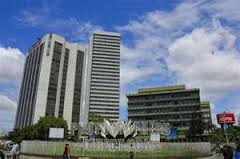
Dhaka, Bangladesh (BBN)- The central bank of Bangladesh has asked the banks to maintain the minimum standard for Liquidity Coverage Ratio (LCR) and Net Stable Funding Ratio (NSFR) from the current month for implementation of the Basel-III roadmap, officials said.
Under the new provision, the minimum standard for LCR is equal to or greater than 100, and for NSFR it is greater than 100.
“Both these ratios are standard measures for liquidity condition of the banks in stressed scenario,” a senior official of the Bangladesh Bank (BB) told BBN in Dhaka.
LCR is a ratio of the stock of high-quality liquidity assets to the net cash outflow within 30 calendar days.
On the other hand, NSFR is a ratio of the available amount of stable fund (stable source of fund) to the required amount of stable fund (use of fund).
By fulfilling these requirements, the banks will be able to withstand liquidity risks, arising from unfavourable market conditions, according to the central banker.
He also said LCR would help the banks to meet any short-term liquidity problem, arising within 30 days.
NSFR would help the banks meet any long-term liquidity problem, arising within a year, the central banker added.
The BB B) issued a circular in this connection on Thursday, and asked the chief executives of all scheduled banks to submit information on both LCR and NSFR to its Department of Off-site Supervision (DOS) in the prescribed format.
“We’ve issued the circular with necessary explanations for implementation of the Basel-III roadmap, issued by the central bank’s Banking Regulation and Policy Department on December 21 last year,” the BB official explained.
The banks will have to submit information relating to liquidity position to the DOS monthly, based on the balances of last day of the reporting month, by the 15th of the following month.
Statement regarding funding position has to be submitted quarterly, based on the balances of last day of the reporting quarter, by the 15th of the following month, according to the BB circular.
LCR is a new liquidity standard introduced by the Basel Committee to make sure that banks maintain an adequate level of unencumbered, high-quality liquid assets that can be converted into cash to meet their liquidity needs for 30 calendar days. NSFR is a longer-term liquidity monitoring tool.
The Basel-III is set to strengthen bank capital requirements and introduce new regulatory requirements on bank liquidity and bank leverage.
The central bank has initiated steps for implementation of the Basel-III framework from July 2014. It will be fully implemented by January 2020, according to the BB officials.
Bangladesh is now implementing the Basel-II accord to consolidate capital base of the banks in line with the international standard.
It has been prepared on the basis of three factors: minimum capital requirement, supervisory review process, and market discipline.
Three types of risks – credit risk, market risk and operational risk – have to be considered under the minimum capital requirement.
BBN/SSR/AD-02Jan15-11:10 pm (BST)









